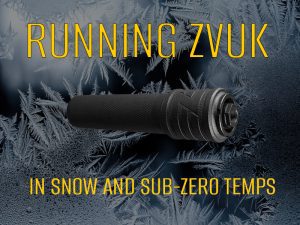AK carbon fouling equals burnt powder residue, tiny metal flakes, and primer by-products that hitch a ride through the gas system and settle on high-heat, high-friction parts.
Your Zastava AK runs a long-stroke piston, so the bolt carrier, piston face, gas block, gas tube, and muzzle device collect the most soot. Chrome-lined Zastava barrels shrug off a lot of grime, but carbon still sneaks into the chamber, on the bolt tail, around the extractor, and in the threads behind a brake or suppressor mount.
Let it pile up, and you invite sluggish cycling, tougher charging, and erratic ejection. Manage it, and the rifle hums.
Why Zastava AKs Keep Running
Zastava leans into durability: robust trunnions, generous operating clearances, and a proven piston system. Those design choices prioritize reliability in mud, snow, or a hot range day.
The flip side? The system vents gas and unburnt particles along the route, so you see grime where the platform works hardest.
The good news: the same clearances that keep the rifle reliable also make cleanup straightforward. You don’t baby a ZPAP; you give it a sensible rinse, and it thanks you with that dependable thump.
Common Culprits
Different powders burn at different rates.
Some loads run clean, others leave extra soot. Shorter barrels dump more pressure into the device at the muzzle, so carbon cakes those threads faster. Add a suppressor (like the Zastava ZVUK titanium AK suppressor), and you increase backpressure, which sends more material back through the system.
That doesn’t spell trouble; it just means you tighten your maintenance cadence. The payoff with a well-made can still look great: less blast, friendlier sound, and better manners.
Where Carbon Hides?
When tackling the AK carbon fouling, work in good light and run this quick checklist after range time:
- Muzzle device and threads: Look for a dry, crusty ring. Back the device off and check the shoulder.
- Gas block and tube vents: Soot builds around the vent holes and inside the tube.
- Piston face and stem: A gray-black cap forms; you want it thin, not flaky.
- Bolt tail and carrier channel: That interface traps carbon.
- Extractor hook and recess: Crud here mimics weak extraction.
- Chamber and throat: Keep them smooth so cases release cleanly.
- Receiver rails and hammer contact points: Wipe and re-lube for that slick cycle feel.
Cleaning Workflow
You don’t need fancy rituals to suppress AK carbon fouling. You need a repeatable sequence and products safe for chrome-lined bores and nitrided or phosphated parts.
- Field strip the ZPAP. Remove the dust cover, recoil spring, carrier with bolt, and the gas tube.
- Pre-soak the hot spots. Apply bore solvent or dedicated carbon remover to the piston face, bolt tail, carrier channel, and muzzle device. Let chemistry work while you tackle the bore.
- Clean the bore. Run a solvent-wet patch from chamber to muzzle, follow with a bore brush for 10–15 strokes, then patch until clean. Finish with a lightly oiled patch; leave only a whisper of oil.
- Scrub the chamber. Use a chamber brush or a snug mop with solvent. Carbon likes the shoulder; kick it out.
- Gas system care. Nylon-brush the inside of the gas tube and the outside of the piston. For stubborn caps, use a brass scraper or a pick gently—don’t gouge. Keep the gas port itself off-limits to tools.
- Bolt and carrier. Brush the bolt tail, lugs, extractor claw, and the carrier raceway. A dental pick pops the last crust at the bolt tail step. Keep the firing pin channel dry and free.
- Muzzle device and threads. Remove the device, brush the threads, and wipe the shoulder. A tiny dab of high-temp anti-seize on the threads helps future removal and fights carbon lock.
- Lube points. Use DRNCH and light oil on the rails, the bolt lugs’ bearing surfaces, the carrier cam track, and the hammer contact zone. A drop on the extractor pivot feels like magic; keep it modest. Avoid oil inside the gas tube or on the piston face.
- Reassemble and function check. Cycle the action. It should feel smooth and consistent.
Maintenance Intervals
- Unsuppressed 7.62×39 range days: Wipe-down and relube after each session; full clean every 500–750 rounds or when you notice extra drag.
- Suppressed sessions with ZVUK: Increase wipe-downs and add a gas-system touch-up every 250–400 rounds. The rifle will tell you by feel and ejection pattern.
- Dust, rain, or winter runs: Clean sooner. Grit plus oil makes a lapping compound, and moisture plus soot makes paste.
- Corrosive-primer ammo: Rinse the bore, gas piston exterior, and muzzle device with water or a water-based cleaner the same day, then follow the normal routine. Dry the parts fully and oil the bore lightly.
Fouling-Resistant Habits
- Torque and time: Seat the muzzle device firmly against the shoulder. A secure device resists gas cutting and carbon wedges.
- Thread care: A fingertip of nickel anti-seize on muzzle threads and on the suppressor mount keeps you in charge, not the carbon.
- Storage position: After oiling the bore, store muzzle-down on a mat for a bit so gravity doesn’t draw oil into the gas system.
- Consistency beats perfection: Short, regular wipe-downs outperform heroic once-a-year scrubs.
- Alignment before suppression: Before threading on the ZVUK, run a caliber-correct alignment rod to confirm concentricity through the device. Clean threads and a square shoulder help the rod glide dead-center.
When AK Carbon Fouling Looks Scary But Isn’t
Heat tints on the piston and a dark halo at the gas vents look dramatic, but usually tell a normal story: the system flows and seals where it should.
Focus on function: smooth cycling, solid lockup, positive extraction, and consistent ejection. If those boxes check out and your inspection points stay tidy, you sit in the sweet spot.
Quick Signs You Should Clean Now
- The carrier feels sticky when you charge the rifle.
- Ejection wanders or cases dribble at your feet.
- The extractor claw shows a hard carbon ridge.
- The muzzle device refuses to budge after hand pressure.
Hit the piston cap, bolt tail, extractor, and muzzle threads first. Nine times out of ten, the rifle perks up before you even touch the bore again.
The Takeaway
Zastava builds rifles that run, despite the AK carbon fouling. Carbon tries to tag along; you simply refuse the ride. Inspect the known hideouts, follow a straightforward cleaning sequence, and set intervals that match your ammo and your use of the ZVUK.
Do that, and your ZPAP stays lively, accurate, and ready for the next stack of steel targets or the next class. Simple habits, big payoff—exactly the Zastava way.



